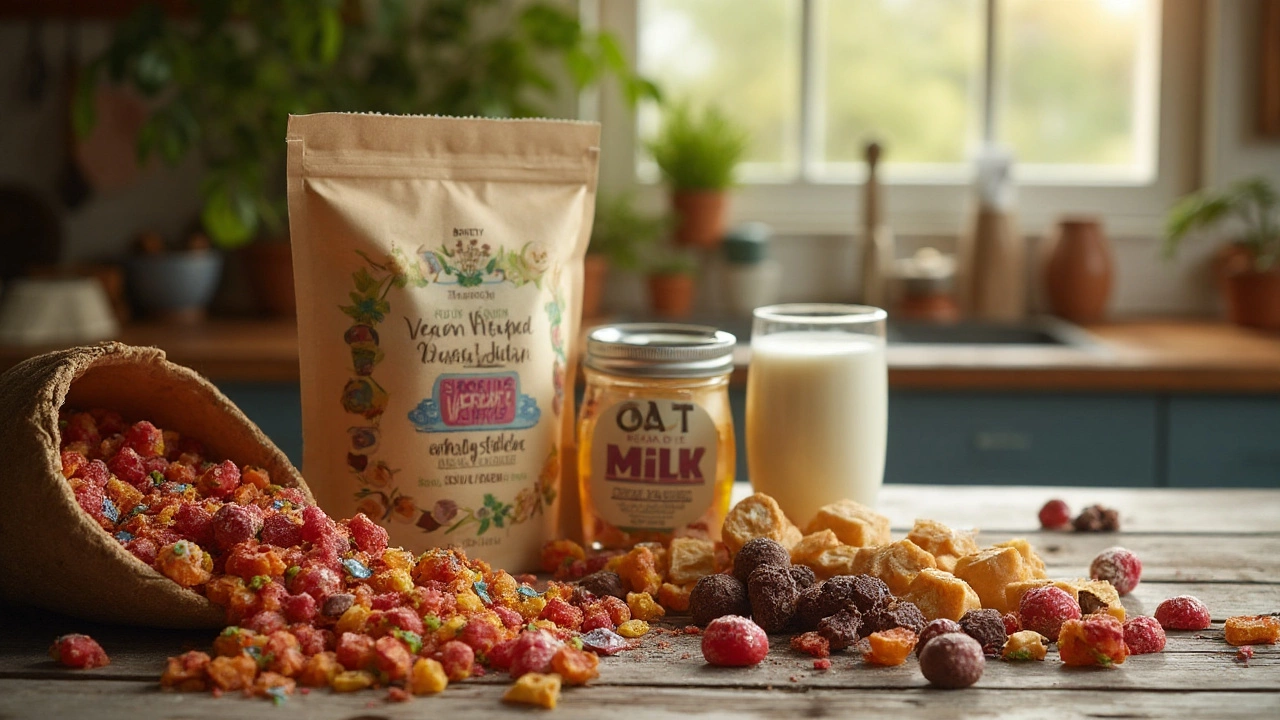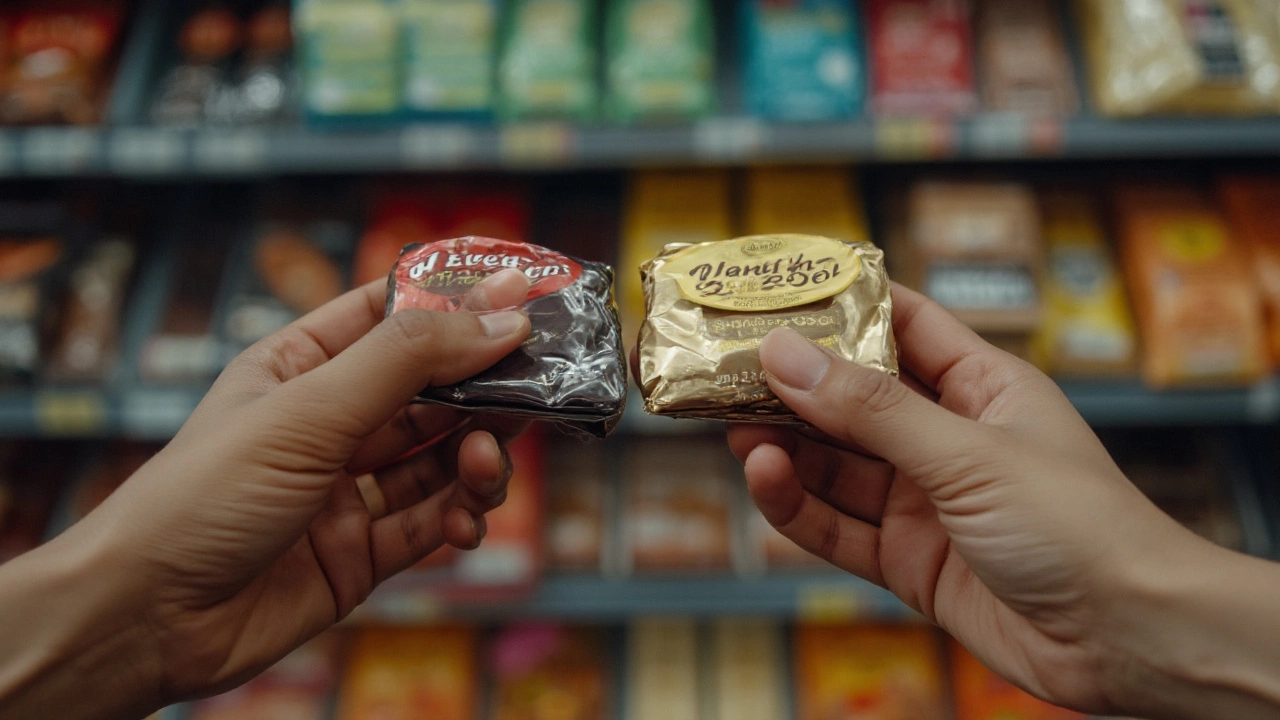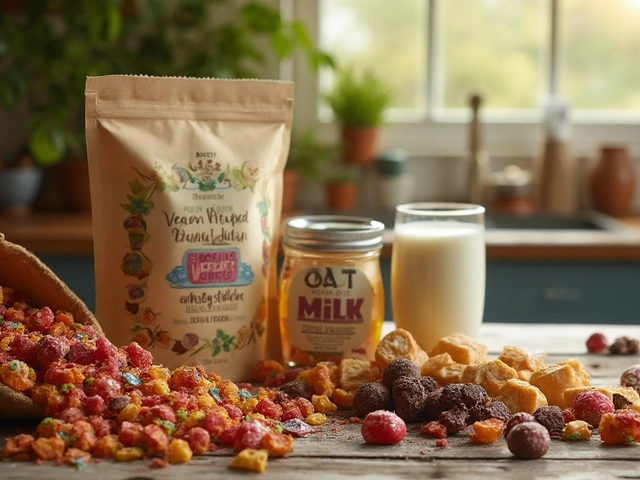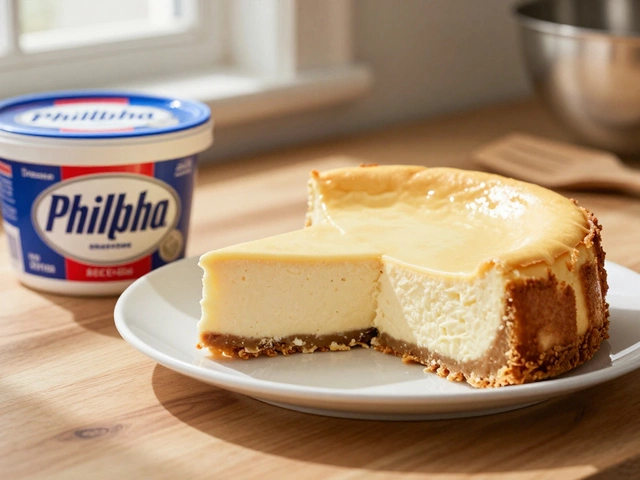
Remember the first time you tore open a pack of M&Ms? That tiny crunch and sweet, colorful burst—it’s almost a ritual. For vegans, though, that ritual comes with a big “but.” M&Ms don’t exactly qualify as plant-based, and finding actual vegan-friendly options can feel like an Easter egg hunt. Is grabbing a handful of these famous candies really off-limits, or does some sneaky vegan version finally exist?
Do Vegan M&Ms Really Exist?
This section dives into what most people wish were a simple answer. You’d think with so many dairy-free chocolates on the market in 2025, we’d have vegan M&Ms on every pharmacy shelf. Nope. The classic M&Ms—all those familiar packets: peanut, milk chocolate, crispy, caramel, peanut butter—even pretzel—are not vegan. The main culprit? Milk powder. Every variety of traditional M&Ms, made by Mars Incorporated, contains milk ingredients, and sometimes even extra animal-based stuff like carmine (yes, that’s from crushed beetles) or shellac (from insects) for shine. The list isn’t getting shorter either because food regulations make it tricky to call anything “milk-free” unless the whole factory goes dairy-free.
You might have seen chatter about 'vegan M&Ms' or plant-based M&Ms on Reddit or YouTube. Here’s where things get twisty. In 2022, Mars released a product called 'Plant-Based M&Ms' in a few markets, but as of August 2025, you won’t find them in most big box stores in North America or Europe. Even when these hit shelves in limited markets, ingredient lists showed traces of milk due to cross-contamination during manufacturing. The packaging usually comes with the dreaded “may contain milk” warning. For strict vegans and people with severe allergies, that’s still a red flag.
There are regional differences worth knowing, too. In Australia, vegan candy fans sometimes spot generic 'chocolate lentils' at stores like Kmart or Aldi—similar shape, colorful shell, no dairy in the listed ingredients. But even these can be made in factories that process milk chocolate, so if you're drawing a hard vegan line, that's another maybe. And no, generic store-brand 'milk chocolate buttons' aren’t really M&Ms anyway, even if the shape is close. Vegans who want that classic crispy shell and chocolate center just have to keep looking—or get creative in their kitchens.
What Makes Candy Non-Vegan Anyway?
Most people think dairy is the only thing keeping candy from being vegan, but it goes deeper. The main suspects in non-vegan chocolate candies are milk powder, butterfat, and whey. It pops up shockingly often—in anything labeled 'milk chocolate,' obviously, but sometimes even in 'dark chocolate' if you’re not paying attention to fine print.
But it's not just about the milk. Candies also use other animal-derived ingredients you might miss if you don't check labels with a microscope. For example:
- Carmine: A common red food dye made from crushed beetles. Some red and pink candies have this instead of plant-based dyes like beet juice or paprika extract. For years, carmine was just called 'E120' in Europe or ‘natural color’ in North America, which barely helps anyone reading in a rush.
- Shellac: This is a shiny resin secreted by the lac bug—think of it as candy varnish. If your chocolate buttons shine like a brand-new car, check for shellac.
- Gelatin: Not an issue in M&Ms, but common in chewy candies or gummy sweets. It’s made from animal bones and ligaments. Some vegan-friendly sweets use pectin or agar-agar instead.
- Lecithin: Usually from soy or sunflower, but sometimes labeled as 'lecithin (egg)' or 'lecithin (animal origin).' If the label doesn’t specify, that’s worth a Google on your phone before you buy.
Weirdest of all, some candies labeled 'vegan' turn out to be plant-based except for one minor coating or additive that comes from bugs or milk. Labels like “dairy free” sound tempting, but that doesn’t always mean fully vegan. There are even companies still arguing whether squirrels count as animals when marketing their products—marketers will literally do anything to make a sale.
If you want to be safe, look for products with a certified vegan logo. Europe and the UK have strict vegan labeling regulations, often stricter than the US, and brands there are more likely to list traces of animal products—and even accidental cross-contamination—right on the front or back of the package.

Top Vegan M&M Alternatives You Need to Try
Okay, so the real deal M&Ms aren’t vegan, but the world’s gotten creative. There are now a handful of solid copycat candies and chocolate lentil brands that don’t use any animal products. Some even taste so close to the real thing, you’ll probably catch yourself double-checking the ingredients—just to make sure Mars didn’t slip in the back door.
- No Whey! Foods Choco No Nos: Probably the best-known vegan M&M alternative. These are free from dairy, nuts, gluten, and soy—the true allergy-friendly pick. They’ve got that candy shell crunch and creamy chocolate center, even if they’re not quite as vividly colored as regular M&Ms. You can buy these online and at some natural food stores across the US and Canada.
- Little Secrets Dark Chocolate Pieces: Almost spot on for flavor and crunch, these come in fun flavors like sea salted peanuts and peppermint. Watch the labels, though—some Little Secrets products contain milk, but the dark chocolate is usually vegan-friendly. Always double check since companies love doing sneaky reformulations.
- Unreal Dark Chocolate Gems: These are palm oil free, vegan, and use natural dyes from beets and turmeric, so they’re less neon and more pastel. Flavor-wise, they're a bit darker and more intense, which honestly satisfies real chocolate lovers. Unreal Gems have shown up at Target, Whole Foods, and Amazon.
- Enjoy Life Ricemilk Chocolate Gems: For folks who miss milk chocolate specifically, Enjoy Life comes close. Their ricemilk chocolate has that lighter, creamier profile, though their shells are a bit thicker. Totally vegan, and the company is also known for its allergy-friendly reputation—big plus for families with different dietary restrictions at home.
- Chocomels Rainbow Drops (UK & EU): A favorite among European vegans, these colorful lentils use all vegan ingredients. You can find them in specialty shops or order directly online; just remember, shipping to other regions gets pricey.
There are also generic versions at some health food stores, but flavors and colors vary a lot. Some brands use natural vegetable dyes, which create softer or sometimes unexpected tones. Don’t get freaked out if your rainbow candies look more like ‘earth tones’—those earthier colors usually mean fewer weird chemicals.
If you want the bright colors and classic taste of the original M&Ms, try doing a side-by-side taste test with friends. Most self-declared chocolate snobs pick out the difference, but little kids rarely notice. That says something about nostalgia over taste, right?
Tips for Finding Truly Vegan Candy
Your first stop is always the ingredient label, but don’t rely just on packaging. Recipes and processing methods change all the time—even familiar brands can go from vegan to non-vegan overnight if they switch suppliers or factory lines. Here’s a checklist for staying on top of your vegan treats game:
- Read the full ingredient list: Don’t just trust the ‘vegan friendly’ buzzwords; hunt for hidden animal ingredients like lactose, casein, or obscure natural colors.
- Look for a certified vegan stamp . In Europe, the Vegan Society logo is a trusted sign, while in North America, the “Certified Vegan” mark is common. These have actual inspection standards.
- Check for ‘may contain milk’ or ‘produced in a facility’ warnings. If you’re strict, this matters.
- Scan for bug-based coatings. Shellac and carmine hide as ‘confectioner’s glaze’ or ‘color E120.’ Pass on candies using these if you want to stay truly vegan.
- Look up independent blogs, vegan Facebook groups, or Reddit’s r/vegan or r/veganfaq for up-to-date product lists. These groups update each time a company makes a change. Community knowledge often beats brand marketing.
- If you love DIY, make your own vegan M&Ms at home. Get some vegan baking chocolate, a small silicone candy mold, and natural food dyes. Roll chilled chocolate in powdered vegan sugar mixed with color—this gives that classic shell crunch (even if it takes practice).
- Shop at stores that label products with extra care, like Whole Foods, Trader Joe’s, or your local co-op. They often supply more vegan house brands and make staff recommendations easy.
Fast fact—global vegan food sales topped $55 billion last year. Companies are watching these trends closely, so it’s only a matter of time before Mars and the other big candy makers get on board with a widely available, totally vegan M&M. Until then, the best you can do is keep an eye on ingredient tweaks and snatch up the best vegan chocolate lentil brands when you spot them. Who knows—you might love them even more than the ones you grew up with.










Write a comment